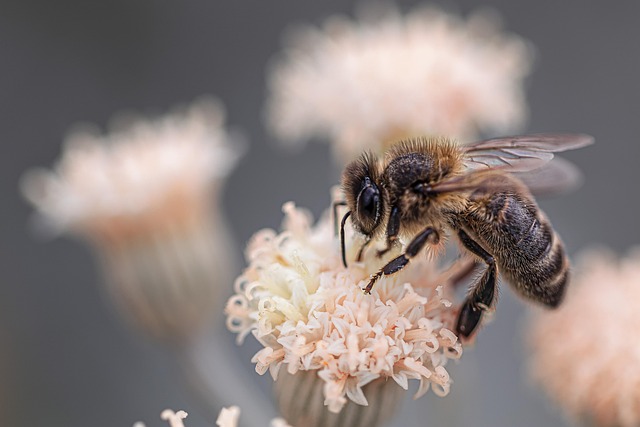Psocids, or book lice, are tiny but damaging insects that thrive in dark, humid commercial spaces and feed on organic materials. Effective commercial psocid extermination requires understanding their behavior, identifying breeding sites (e.g., floor cracks, wall voids), and employing targeted treatments along with regular inspections. A systematic approach combining inspections, pesticide applications, mechanical methods, monitoring, sanitation, and proactive measures ensures successful extermination while preventing reinfestation.
Psocids, also known as book lice, are minute insects that can thrive in various environments, including commercial spaces. To effectively manage these pests, thorough inspections are crucial. This article delves into the world of psocid breeding patterns and highlights the significance of meticulous assessments in commercial settings. We explore common breeding sites and provide a comprehensive guide to successful extermination strategies tailored for businesses facing psocid infestations, emphasizing the importance of professional commercial psocid extermination.
Understanding Psocids and Their Breeding Patterns
Psocids, commonly known as book lice or bark lice, are tiny insects that belong to the Psocidae family. Despite their name, they have no relation to lice and are not parasitic. These creatures are often overlooked due to their diminutive size, but they can cause significant damage in commercial settings. Understanding their behavior is crucial for effective commercial psocid extermination.
Psocids thrive in dark, humid environments, making them prevalent in areas like cracks, crevices, and hidden corners of buildings. They feed on organic matter, including books, textiles, wood, and even paper products. Their breeding patterns are rapid; females can lay hundreds of eggs during their lifetime, ensuring a quick population growth. Identifying their breeding sites is essential for targeted treatments, as professional exterminators can employ specific strategies to eliminate these insects at their source.
The Role of Thorough Inspections in Commercial Settings
In commercial settings, thorough inspections are paramount for identifying and addressing psocid activity and breeding sites. Regular and meticulous assessments play a crucial role in effective commercial psocid extermination strategies. By systematically examining spaces, including hard-to-reach areas and concealed corners, professionals can pinpoint the presence of these tiny insects and their nests. This proactive approach is essential for preventing widespread infestations that could disrupt operations and damage merchandise.
These inspections involve close scrutiny of items like floor cracks, wall voids, behind appliances, and within storage areas. Trained personnel utilize specialized tools and techniques to uncover hidden psocid colonies, ensuring no breeding ground goes unnoticed. Early detection through such thorough inspections enables timely intervention, making commercial psocid extermination more manageable and cost-effective.
Identifying Common Psocid Breeding Sites
Psocids, also known as book lice, are tiny insects that thrive in dark, moist environments and can quickly multiply in hidden breeding sites. Identifying these sites is crucial for effective commercial psocid extermination. Common areas where psocids breed include cracks and crevices in walls, baseboards, floorboards, and around windows and doors. They often nest in materials high in starch or cellulose, such as paper products, cloth, wood, and even dried plant matter.
Other breeding sites may be less obvious but equally problematic. Ceilings, especially in older buildings, can harbor psocid colonies due to the presence of insulation and suspended ceilings. Dark corners of attics and basements also provide ideal conditions for their proliferation. Additionally, these insects can infest stored food items, leading to contamination if not addressed promptly. Regular inspections by professionals familiar with commercial psocid extermination techniques are essential to pinpointing these breeding sites and implementing targeted strategies to eliminate them effectively.
Effective Strategies for PSOCID Extermination
To effectively eradicate psocids, a systematic approach is crucial. Commercial psocid extermination often involves a multi-step process starting with thorough inspections to identify breeding sites. Once hotspots are located, targeted treatments using industry-approved pesticides can be applied. Professional exterminators may also employ mechanical methods like vacuuming and physical barriers to prevent reinfestation. Regular monitoring post-treatment is essential to confirm the elimination of psocids and their eggs.
Additionally, maintaining a clean environment is key in commercial psocid extermination. This includes regular sweeping, dusting, and proper waste management to remove potential food sources. Sanitation practices should be strictly followed to minimize favorable conditions for psocid infestation. Proactive measures like sealing entry points and addressing moisture issues also play a significant role in preventing future outbreaks.
Psocids, often overlooked, can cause significant damage to commercial properties. Regular and thorough inspections are key to early detection, as they enable swift action to prevent breeding sites from forming. By understanding their breeding patterns and identifying common areas where these tiny pests congregate, businesses can implement effective strategies for commercial psocid extermination. This proactive approach ensures a pest-free environment, protecting both the integrity of buildings and the reputation of businesses.
